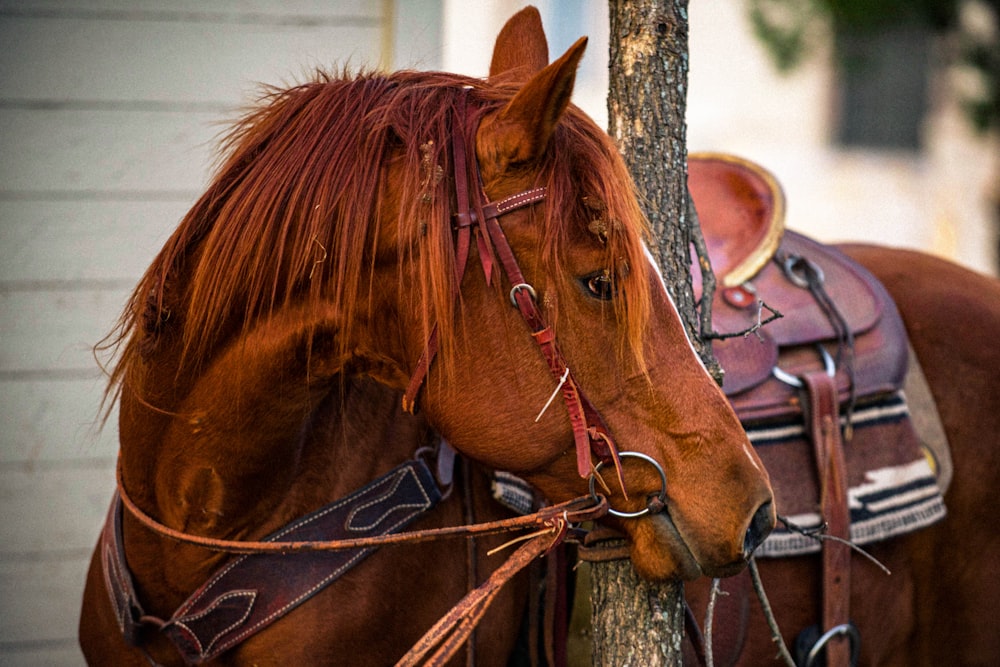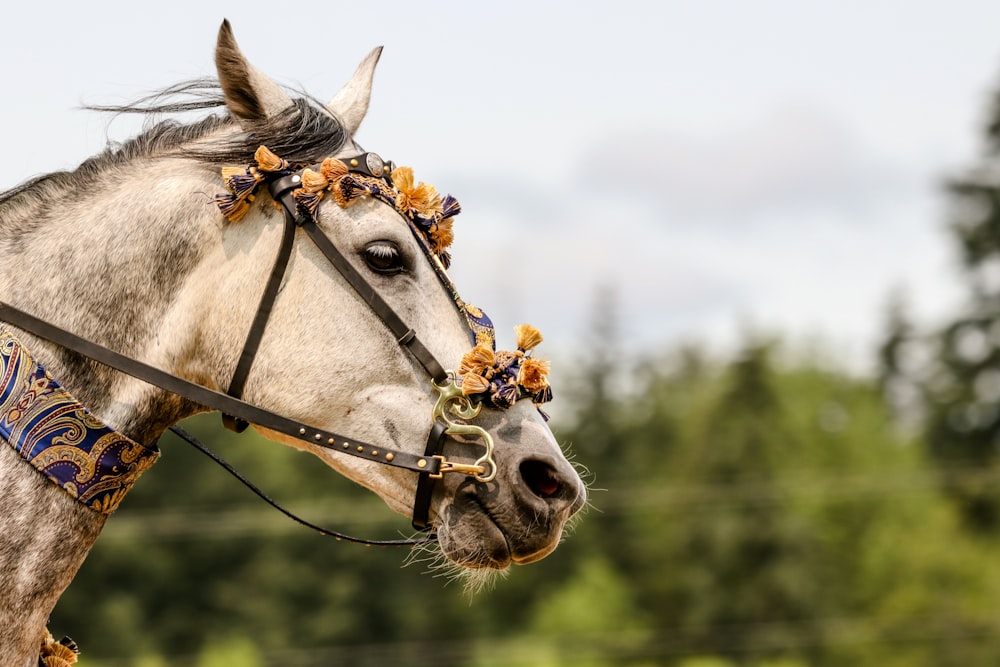Last Updated on September 6, 2020 by Allison Price
Stroke cases in a horse present similar symptoms to a human case. Stroke in horses occur when blood flow to the brain ceases or interrupted. Equine strokes are usually caused by either heat or a hemorrhage in the brain.
Symptoms
Knowing the symptoms and starting treatment early will give your horse the best chance of recovery from stroke.
Loss of Balance
The most obvious signs of a stroke in a horse is his inability to stand straight and hold his head up. You may see them stagger or trip for unknown reason. With poor balance, you may see your horse tilt his/her head. They may assume a splay-footed stance or lean against stall walls for support. This loss of balance and inability to stand is the first symptom of a stroke.
Disorientation
Most vets agree that horses suspected of mild stroke show symptoms such as loss of control & panicking.

Seizures
This will be a sudden occurrence in your horse’s state, yet it is still considered to be a symptom of a stroke. Horses may start to tremble. Their backs’ end would go out, eyes show nystagmus, and would flip backwards and writhe on the ground. This can go on for hours.
Swollen Limbs
For unknown reason, the horse will appear swollen. They will also suffer a release in uncontrollable bowels.
Elevated Respiratory and Heart Rate
These symptoms are not as obvious as the previous ones, but this is still detectable. A combined temperature of higher than 103 degrees F and dehydration are all signs of a stroke.
Paralysis
Paralyses of muscles of the eyes, face or mouth are some of the obvious symptoms of stroke. These are all evident by drooping eyes, ears or lips. If it worsens, the horse may suffer the loss of sensation along his/her face, neck or body.
Abnormal Gait/Lameness
Horse’s walking abnormality is when they are unable to walk in the usual way. Disruptions in the command and control system of a horse trigger certain issues. Nerve signals must travel from his brain down his spinal cord to the nerves. These nerves control his muscles for normal movement. The nerves then signal back to his brain, indicating where his limbs are. If the signals do not pass, the horse may become uncoordinated, or it may show abnormal gaits.
Other symptoms include a fever greater than 106 degrees and skin dryness. These are also paired with signs of issues with the central nervous system and lack of awareness.
Diagnosis and Treatment
If you think your horse might have these problems, it’s time to call your veterinarian. That is the only thing you can do. Veterinarians use a standard approach to determine a diagnosis for stroke-stricken horses. Information such as age, breed and use is important because some symptoms are common in certain groups of horses. Some vets may perform a Neurological Exam to determine the affected site in the nervous system.

Process of a Neurological Exam:
- General assessment
Your veterinarian is studying the emotional condition and actions of your horse. Is he lethargic, or alert? Is your horse standing or down? Wandering, circling or other peculiar actions or postures?
- Basic reflexes
Part of the exam usually starts at the head with tests of the cranial nerves. These involve examining different functions like hearing, vision, swallowing and muscle control.
- Maneuvers in hand
This assessment determines if your horse is in control of its limbs and knows where its feet are. The vet will watch while the horse backs up and pushed in both directions in very tight circles. This is done to see how it positions its feet.
- On a slope
Your veterinarian may ask you to see your horse walking up and down a hill. Observe his/her movements. See if he’s slipping, dragging his toes or displaying other gait abnormalities.
- Tail pull
This lets the vet determine the balance, strength and reaction time of your horse.
- Foot placement
These measures help assess the sensitivity of your horse’s position on its leg.
Your vet may give your horse some steroids, aspirin or other drugs for treatment. Although, these drugs are not always effective. Some vets will give your horse tranquilizers and anti-inflammatories to identify the root. It can be the lack of calcium phosphorus in your horse’s blood or other causes. You can also help by hand walking her, hand trotting her, massaging her or anything you can think of that may help. Look for ways that you can feed your horse. Indulge him/her for fast recovery.
Will Your Horse Gets Better After the Stroke?

There’s no definite answer as there isn’t specific treatment yet. Although for most cases, horses tend to recover within 1-2 months. Mild to moderate unmounted, controlled exercise can help in rehabilitation. This is a fact suggested by clinical experience. The stability of the horse will dictate the exercise level. The opinions of both the examining veterinarian and the owner will also matter. Total recovery or neurological normalcy may not longer be possible. Maximize clinical success by rehabilitation and strengthening of affected horses. When stroke damages a vital part of the brain, recovery is no longer possible. Most owners tend to resort for euthanasia if their horses are unable to eat. The long-term outlook and risk of another stroke depend on what caused the incident. This will also determine whether it is possible to treat this.



